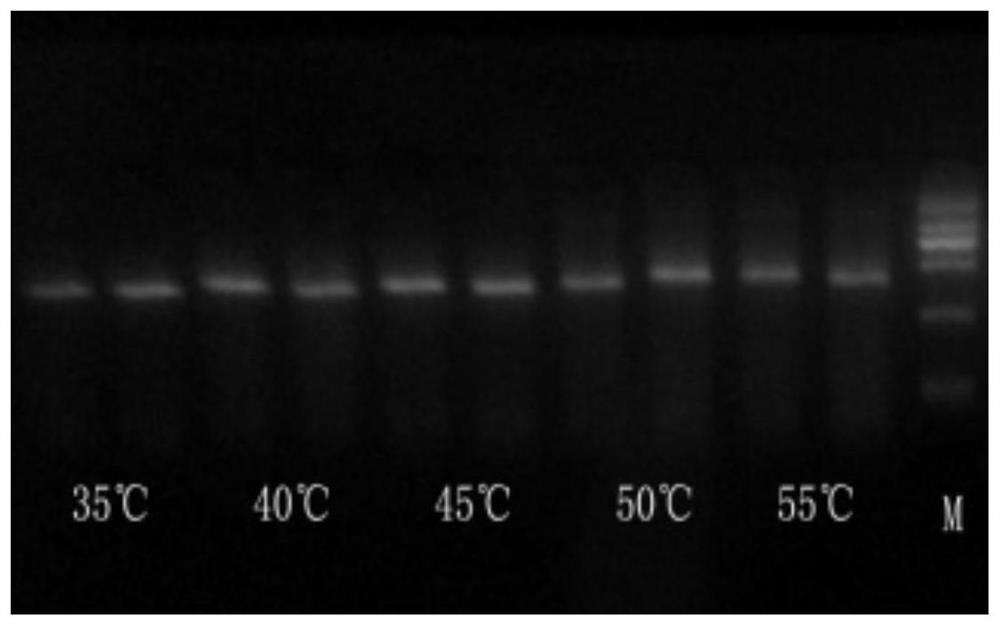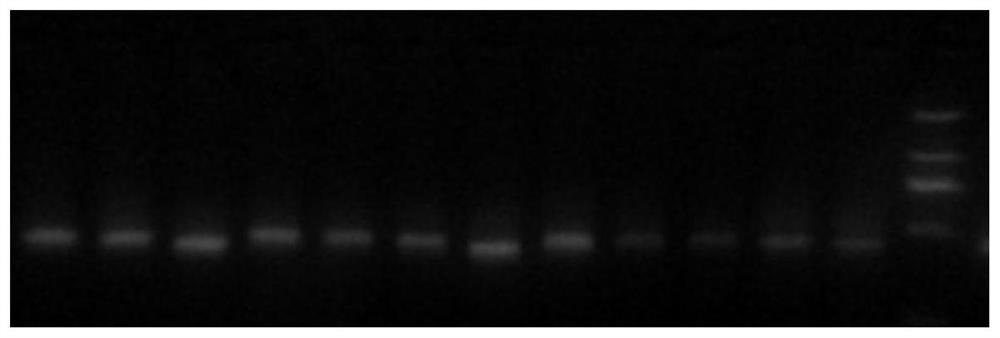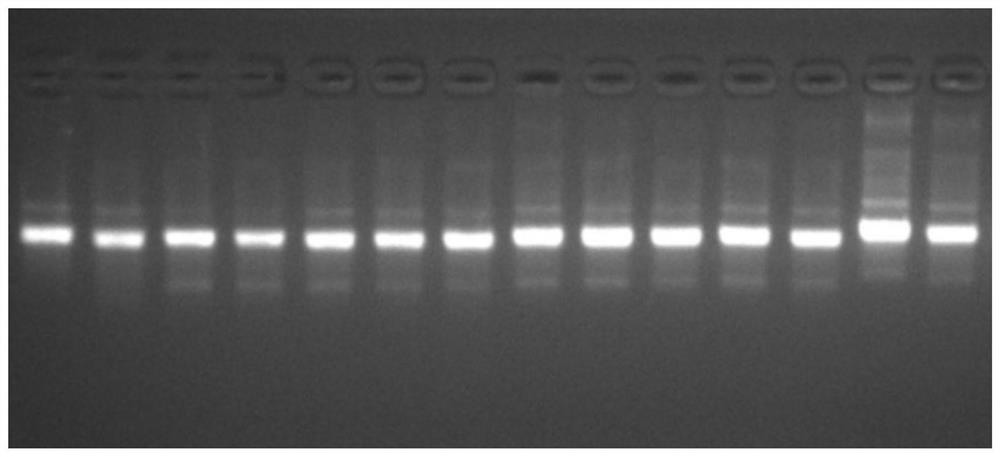Nucleic acid for inhibiting thermostable polymerase and application thereof
A heat-stable polymerase technology, applied in the direction of enzymes, transferases, enzymes, etc., can solve the problems of increased reaction uncertainty, modification uncertainty, antibody activity difference, etc., to achieve obvious activity blocking effect, mild modification process, The effect of good hot start
- Summary
- Abstract
- Description
- Claims
- Application Information
AI Technical Summary
Problems solved by technology
Method used
Image
Examples
Embodiment 1
[0093] Embodiment 1, inhibit the nucleic acid of thermostable polymerase
[0094] The inventor designed a series of single-stranded nucleic acids, and after multiple rounds of screening and testing, the nucleic acid with the sequence shown in SEQ NO:1 was obtained. The sealing performance at different temperatures was tested to perform the function of binding and inhibiting thermostable polymerase. The test method: using nucleic acid The modified Taq enzyme (refer to Example 2) was used to prepare a PCR system, using human genomic DNA as a template, and performing heat treatment at 35 / 40 / 45 / 50 / 55°C before performing the PCR reaction, and then proceeding to a normal PCR amplification reaction Finally, the number and brightness of non-specific bands were analyzed by agarose electrophoresis to judge the blocking effect of the nucleic acid aptamer on the Taq enzyme. Such as figure 1 As shown in the figure, it can be seen from the figure that the nucleic acid modified Taq enzyme h...
Embodiment 2
[0096] Embodiment 2, the preparation of nucleic acid modification enzyme
[0097] The nucleic acid provided in Example 1 is subjected to gradient annealing, the annealing condition is annealing from 95°C to 4°C, 1 round of annealing every 8-10°C, and each round is treated for 1-2 min; to make it fold correctly into a stem-loop structure. Mix DNA polymerase (such as Taq enzyme) with the above-mentioned folded nucleic acid, put it in a 5ml nut tube, place it on a plasma mixer, set the rotation speed at 50rpm, and mix and modify it for 8 hours at 10°C to obtain Nucleic acid modifying enzymes.
[0098] Purify the nucleic acid modifying enzyme with a Mono Q column, separate the unmodified nucleic acid, and collect the enzyme that has completely modified the nucleic acid; concentrate the modified nucleic acid modifying enzyme so that the protein concentration is greater than or equal to the protein concentration before modification , optional surfactants (such as Tween 20) and cryo...
Embodiment 3
[0099] Embodiment 3, detection of enzymatic sealing performance
[0100] Prepare a PCR reaction system with different nucleic acid-modified Taq enzymes, use human genomic DNA as a template, set non-specific amplification conditions for PCR amplification, and finally use agarose electrophoresis to compare the number of non-specific bands to determine the suitability of the aptamer Blocking effect of Taq enzyme.
[0101] 1. Enzyme Activity Sealed Detection System Preparation
[0102] Detection primers:
[0103] Forward primer: 5'-ACGCCTCCGACCAGTGTTT-3';
[0104] Reverse primer: 5'-ACGCCTCCGACCAGTGTTT-3'.
[0105] Enzyme activity closed detection system:
[0106]
[0107] The nucleic acid modification Taq enzymes in the table are prepared by using the nucleic acids shown in SEQ ID NO: 1-12 according to the method in Example 2.
[0108] The nucleic acid of the control nucleic acid modification Taq enzyme (1#, 2#) is:
[0109] 1#: 5'-CGATCATCTCAGAACATTCTTAGCGTTTTGTTCTTGTGT...
PUM
 Login to View More
Login to View More Abstract
Description
Claims
Application Information
 Login to View More
Login to View More - R&D
- Intellectual Property
- Life Sciences
- Materials
- Tech Scout
- Unparalleled Data Quality
- Higher Quality Content
- 60% Fewer Hallucinations
Browse by: Latest US Patents, China's latest patents, Technical Efficacy Thesaurus, Application Domain, Technology Topic, Popular Technical Reports.
© 2025 PatSnap. All rights reserved.Legal|Privacy policy|Modern Slavery Act Transparency Statement|Sitemap|About US| Contact US: help@patsnap.com



